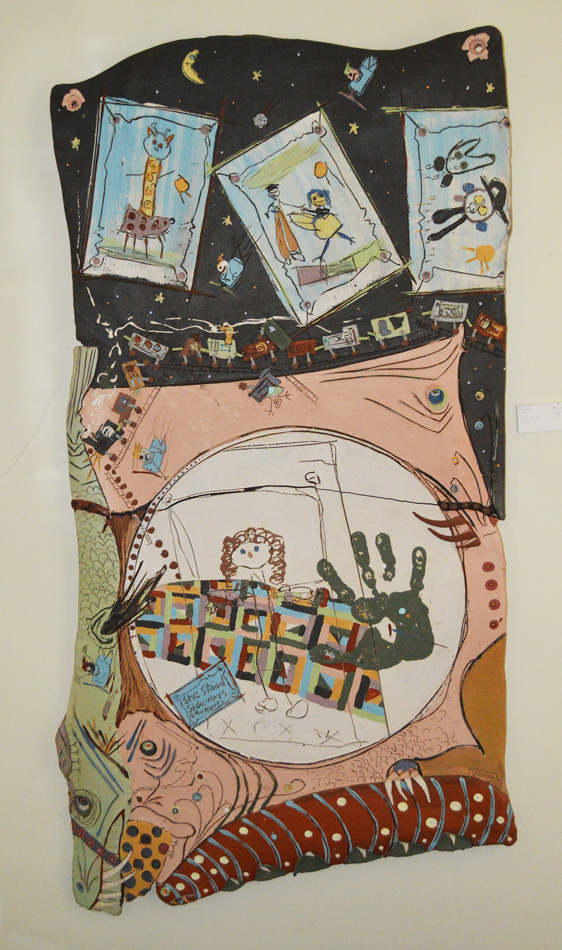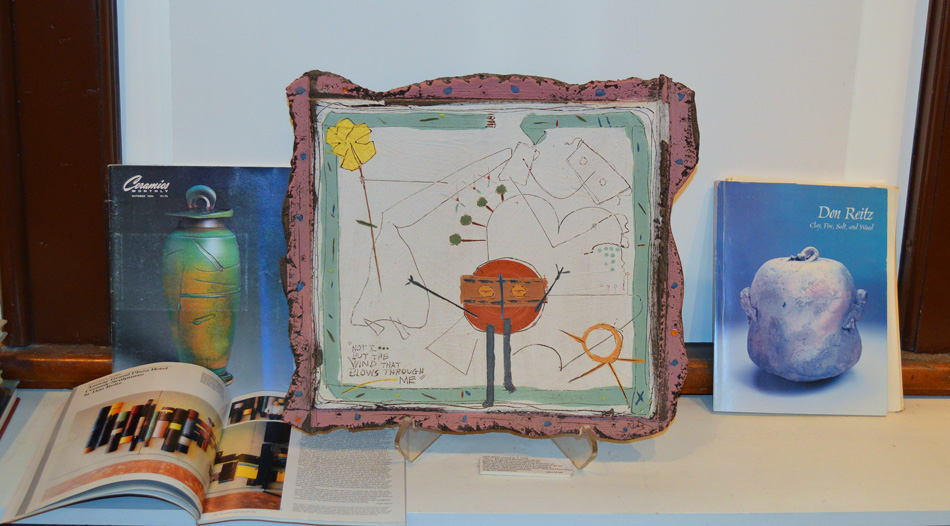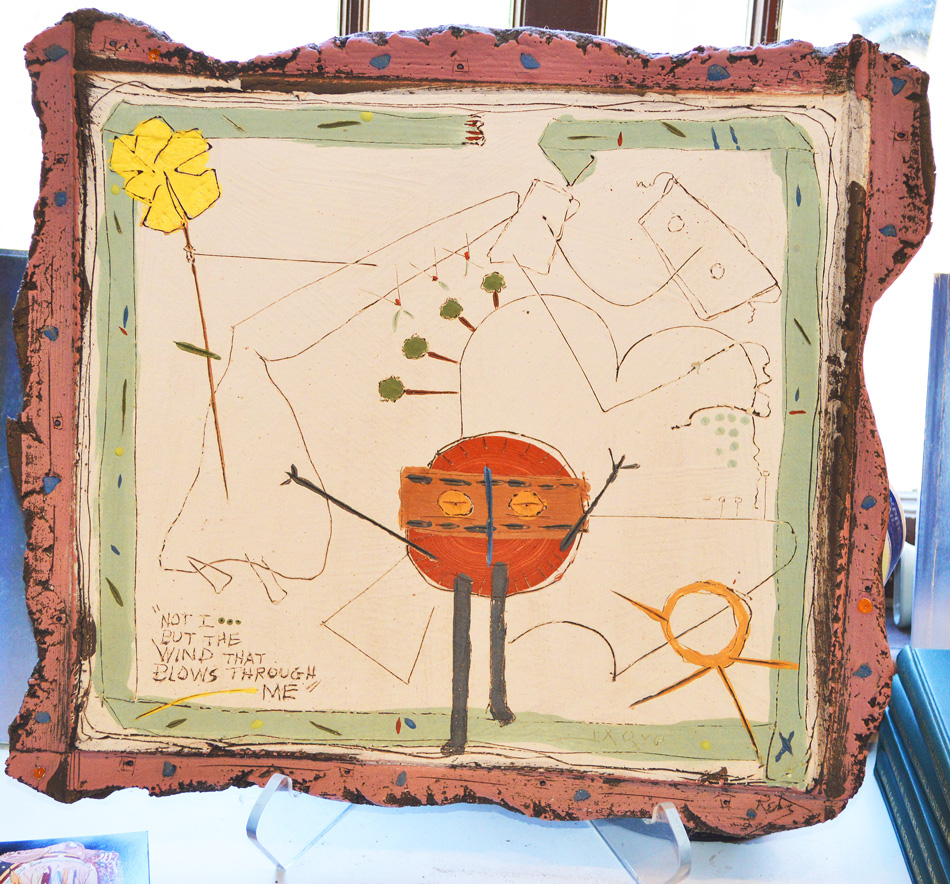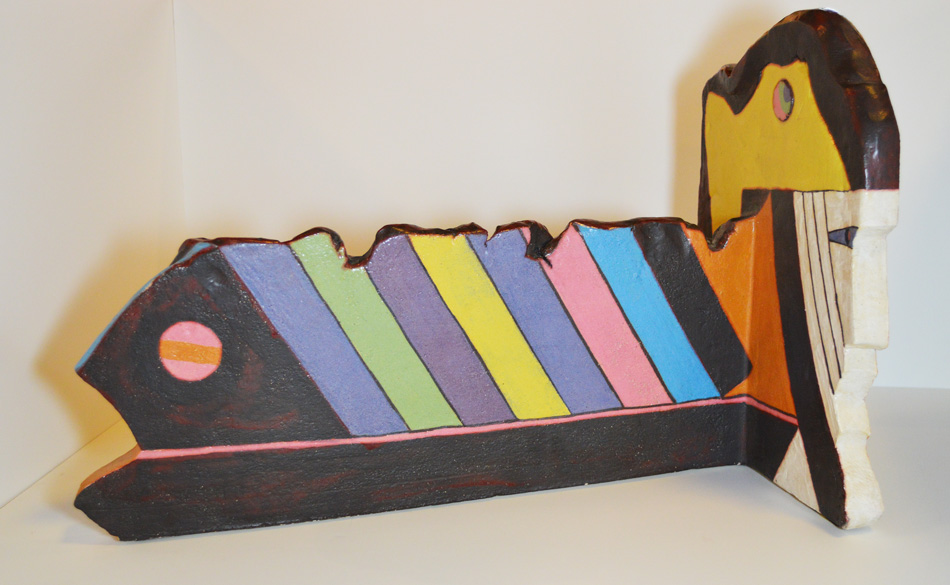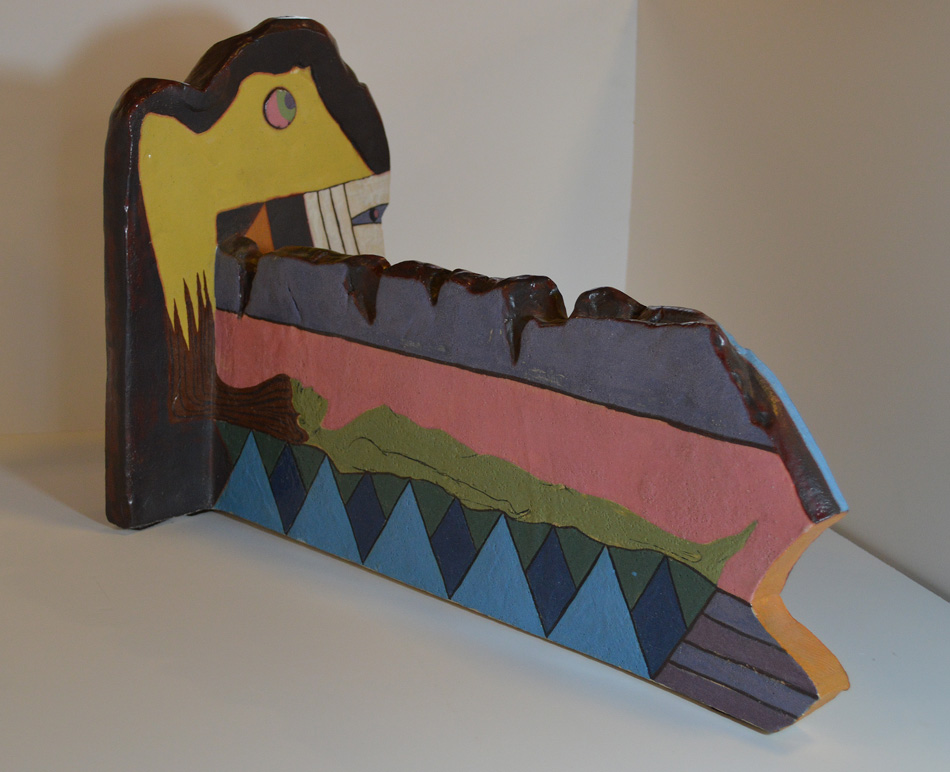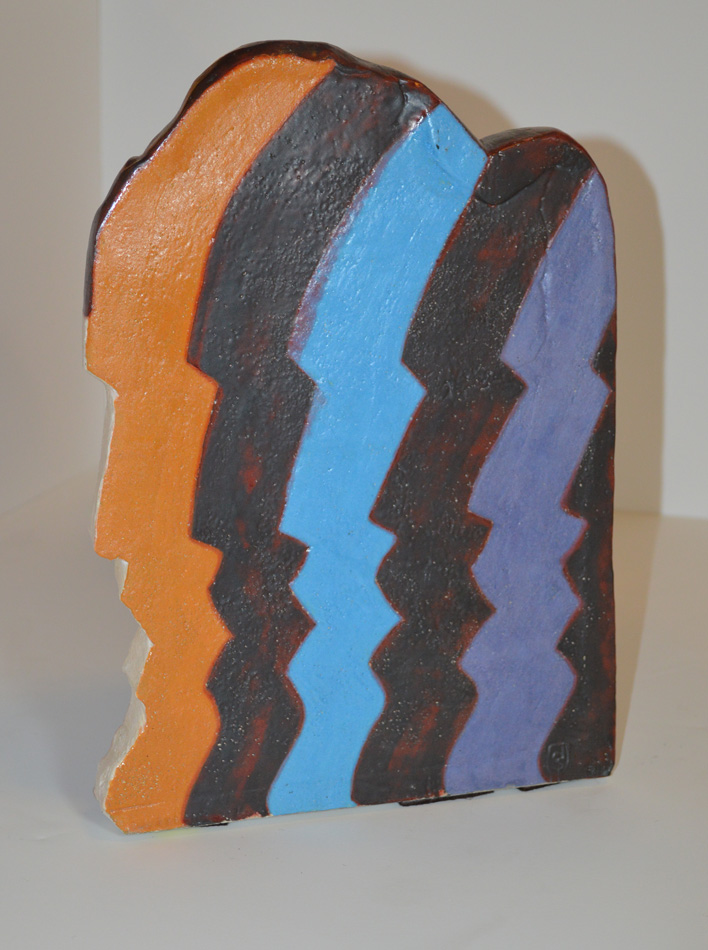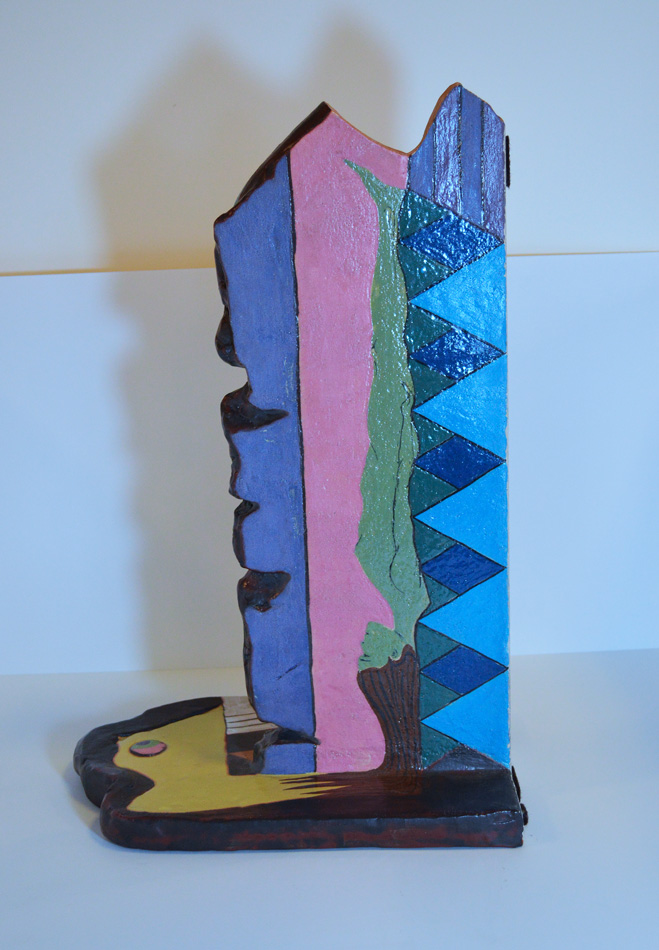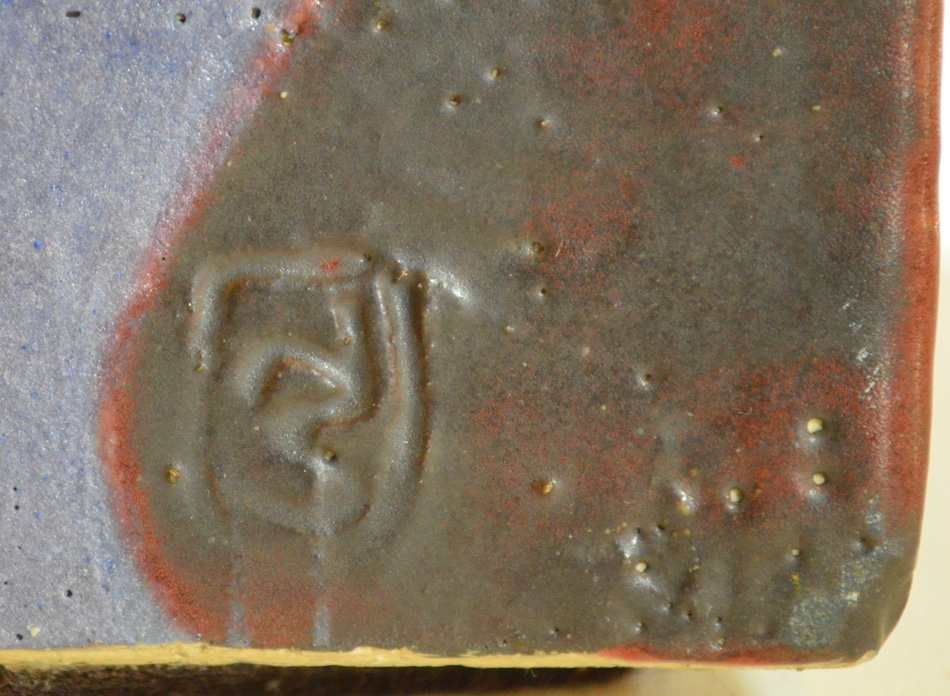|
With regret we pass along the news of the passing of Don Reitz:
Margalit Fox: Don Reitz, Who Made Dirt and Salt Into Art, Dies at 84 (NY Times 3/29/14):
Don Reitz, an internationally renowned artist in dirt and salt, died on March 19 at his home in Clarkdale, Ariz. He was 84. The apparent cause was heart failure, said Leatrice Eagle, a longtime friend. A ceramicist — with typical puckish pragmatism he preferred to describe his chosen medium as dirt instead of clay — Mr. Reitz was one of a small cadre of mid-century artisans who expanded the medium to include immense, intellectually provocative works of abstract art. At his death, he was an emeritus professor at the University of Wisconsin, Madison, where he taught for a quarter-century before his retirement in 1988. His work is in the collections of the Smithsonian Institution, the Museum of Arts and Design in New York, the Museum of Fine Arts in Boston and elsewhere.
When Mr. Reitz began his craft in the early 1960s, ceramics more or less equaled pots, plates and pitchers. Influenced by the prevailing cultural winds, which were sweeping away figurative approaches from other areas of art, he and a few colleagues — notably Peter Voulkos, who died in 2002, and Rudy Autio — wrestled clay off the dinner table. Where Mr. Reitz had been trained to make pots on a wheel, glaze them delicately and fire them to a genteel finish, his work soon assumed a muscular anarchy. No longer content to rely on the wheel alone, he pushed, pulled, prodded, punched, pinched and poked mountains of clay into vast abstract forms, often incising them with markings that were as essential to the finished piece as the construction itself.
He was known in particular for reviving the centuries-old technique of salt firing, in which salt added to a hot kiln yields textured surfaces far different from those made with conventional glazes. Mr. Reitz’s style was characterized by “a kind of tension between a respect for classical pottery form and a really kind of brash, impetuous approach to working with wet clay,” Jody Clowes, the curator of “Don Reitz: Clay, Fire, Salt and Wood,” a touring exhibition of 2005, said in an interview on Friday. “He would work with forms that you can take back to Chinese or Egyptian ceramics and see similar proportions,” Ms. Clowes said. “He really was a classicist in that sense. And yet, he really was part of this 1960s ‘Let’s dig deep in the mud and see what happens’ approach.”
If dirt led Mr. Reitz to salt, then meat led him to dirt. Donald Lester Reitz was born on Nov. 7, 1929, in Sunbury, Pa., and reared in Belvedere, N.J. Dyslexic, he preferred working with his hands to schoolwork. Enlisting in the Navy in 1948, he spent five years as a salvage diver and afterward plied a series of trades — truck driver, sign painter — before settling into a career as a butcher. “In a way, it is an art,” Mr. Reitz wrote in a 1991 autobiographical essay in the magazine Ceramics Monthly. “You have to know how to cut and display your product, everything from putting bootees on lamb chops to arranging a crown roast. I could cut rosettes on a ham so that when it was baked, they opened up in beautiful patterns.”
But with time, he began to chafe among the meat. Enrolling at Kutztown State Teacher’s College in Pennsylvania, he studied painting; after earning a bachelor’s degree in art education there in 1957, he taught in the Dover, N.J., public schools. Mr. Reitz had discovered ceramics in his last semester of college, and that, he soon realized, was his true calling. Installing a wheel in his house and a kiln outside it, he began making pots, which he attempted to sell at a roadside stand. No one stopped until he also began offering homegrown vegetables. People bought the vegetables, and he gave them the pots at no charge.
From the New York State College of Ceramics, part of Alfred University in western New York, Mr. Reitz earned a master of fine arts degree in 1962. He joined the Wisconsin faculty that year. At Alfred, he had happened upon salt firing by chance, when he saw a professor sitting near a kiln, interrupting contented puffs on a corncob pipe long enough to open the kiln door and toss in salt. Burning off, the salt formed sodium vapor, which reacted with the silica in the clay to make a pebbled brownish glaze. “I will never forget the rush I felt when I threw in my first handful of salt,” Mr. Reitz wrote. “It started to snap, crackle and pop, and burned little holes in my shirt.”
At the time, salt firing, conceived in the Middle Ages and still used in Europe, was little known in the United States. More than anyone else, Mr. Reitz is credited with helping revive the technique in American ceramics. Unlike traditional glazing — done by applying a paintlike substance to unfired clay — salt firing, Mr. Reitz realized, would not obscure his incised marks. He enhanced salt’s alchemy further by coating pieces with a range of metal oxides before firing them, which let him achieve blues, greens and ochers. He enhanced it still further by flinging into the kiln almost anything that came to hand. “He was a really fearless experimenter,” Ms. Clowes said. “He would throw all kinds of stuff in there — anything from copperplate to banana peels — and see what happened.”
Mr. Reitz’s later work was born of adversity. In 1982, he was seriously injured in a car crash; at the same time, his 5-year-old niece, Sara, began treatment for cancer. Convalescing, Mr. Reitz began exchanging drawings with his niece. The simplicity of her work informed his own: in his art from this period, he used clay as a canvas, painting flat, platterlike pieces with vivid colors and deceptively childlike designs. “I couldn’t work the clay as much,” Mr. Reitz told The St. Louis Post-Dispatch in 1992. “So I had to rely on color. Working with color helped me to heal.” He recovered sufficiently to resume large-scale projects.
Mr. Reitz’s first marriage, to Johanna Denker, ended in divorce, as did his second, to Paula Rice. Survivors include two children from his first marriage, Brent and Donna, and his niece, now grown. Among his honors are a gold medal from the American Craft Council, the organization’s highest award.
To the end of his life, Mr. Reitz spoke with awe at the primitive abandon his profession afforded. “Here I am, 78 years old, working in mud,” he said in a 2008 interview. “And people pay me for it.”
Although we hadn't heard from Don since he left the University of Wisconsin and moved to Arizona, we had had a short but intense friendship with him. We first met when Joan Gardy Artigas came to Madison for a show at our gallery in 1982. When Don found out he was coming, he invited him to return as a visiting professor at the U.W. Art Department, which Joanet did the next year. He stayed with us for about two weeks while he worked in the ceramics lab on campus and hung out with Don, George Cramer, Bruce Breckenridge, and Wayne Taylor, then the chair of the department and a good friend of ours. During Joanet's stay, we got to spend some time with Don and to trade him several works on paper for two of his ceramic sculptures (see below). The story of the works we acquired is told above. What we were struck by was the naturalness with which Don told it to us. Yes, he had skidded on an icy road coming back from an exhibition of his ceramics, crashed his truck full of his work into one of those giant highway light fixtures, which fell upon his truck so that the police and an ambulance crew had to use the jaws of life to extract him from the ruins of his truck. The doctors, after examining him, told him to start thinking about how he was going to spend the rest of his life, because it was not going to be firing large heavy ceramic sculptures, at least not unless he could do that while confined to a wheel chair. As he told the story, that was not going to happen, especially not after he got the news that his 5-year old niece had cancer and was not expected to survive. She began sending her drawings to him to cheer him up, he in turn began to send drawings back to her. Soon they both began getting better, and fairly quickly instead of drawings on paper, he was sending her drawings on ceramics. Naturally, they both quickly recovered fully and she is listed in the Times obit above as one of his surviving relatives, 32 years after the fact.
Several years ago, ArtAaily.org described Don as follows: "Don Reitz is recognized as one of the most important and influential ceramic artists of this century. Trained at Alfred University in the early 1960s, Reitz has pursued a life-long investigation of salt- and wood-firing of his ceramic pieces in order to preserve the energy and freshness of his artistic marks and gestures. Finding that the texture and unpredictability of salt-firing suited his work, Reitz almost single-handedly revived this neglected technique, and through long experimentation developed a range of colors and surface effects previously unknown in salt-firing. Juggling and manipulating the variables in each firing, Reitz is a virtuoso who relishes knowing what he can control and what he cannot, and his work maintains a fine balance between technical mastery and improvisation. Affectionately known within the ceramics community as "Mr. Salt," his approach to firing has been widely influential. Since the 1970s Reitz’s work has focused on full-bodied jars and teapot-like forms that he pushes, pulls, and swats into shape, etches boldly with knives and fingermarks, and glazes with brilliant nuance. In the 1980s, after a serious accident curtailed his physical activity, Reitz turned to low-fire slips and glazes, spilling his anguish into brightly drawn narratives on somber, unreflective black clay. More recently, Reitz has pursued wood-firing with the same passion he once reserved for salt, traveling around the country to fire his work in kilns that offer the particular effects he seeks. While his wood-fired surfaces can be complex and dense, with aggressive drips of glaze and textures that are often harsh, Reitz's mature vessels demonstrate power, serenity, and balance. His work is currently featured in the collections of institutions such as the American Craft Museum, the Mint Museum of Craft + Design, the High Museum of Art, The Art Institute of Chicago, the Smithsonian Institution, and the Museum of Fine Arts, Boston, in addition to the collections of many private individuals. A skilled technician, a natural teacher, and a fearless improviser, Reitz has served as a mentor to thousands of ceramic artists through his role as a teacher at several institutions, including the University of Wisconsin–Madison, where he taught from 1962–1988 before relocating to Arizona where he now resides. Reitz has continued to travel throughout the United States and the world to impart his personal approach to working with clay and fire. In 2002 he received one of the highest honors in his field, when the American Craft Council awarded him their Gold Medal."
In addition to being featured in many issues of Ceramics Monthly (see especially the October 1984 issue, which features a number of works done about the same time as ours during the period when he and his niece were actively collaborating in their mutual recoveries; see also see pp. 39ff, which illustrate 10 of the works in this series in the Dec. 1984/Jan. 1985 issue of American Craft, which features an article on the monumental wall pieces he began making after his niece was recovered). Also see the March 1985 issue of the Wisconsin Academy Review, which shows him giddily working on a very large sculptural piece in the series on the front cover (with a number of his niece's drawings pinned to the wall behind him). Also see Jody Clowes, Don Reitz: Clay, Fire, Salt, and Wood, with an interview of Don Reitz by Mark Leach, a large-format 128-page study of his works on the occasion of a 2004 retrospective of Don's work at the Elvehjem Museum of Art at the University of Wisconsin Madison, the last time we got to spend some time with him before he went off to Arizona and we departed Madison for Upton MA. Finally, see Ceramics Monthly (Feb. 1991) with a great picture of Don on the front cover and a feature article on pp. 47-52, in which Don notes: "The drawings my niece sent to make me feel better started me on a search for myself. Unable to physically construct larger forms or wwork on the wheel, I began to to do paintings on clay, using brightly colored slips at low temperatures. The childlike imagery was a search for basic truth. I worked with this color palette and imagery until my physcial and spiritual self no longer required these things to be done in clay" (p. 52).
|
|
|
